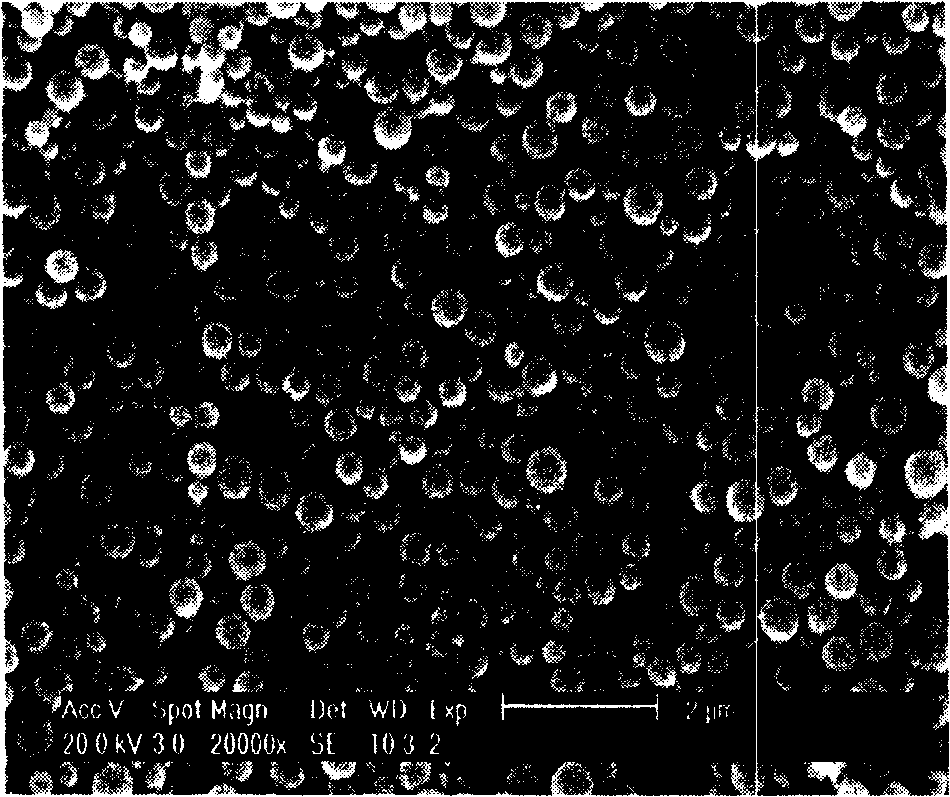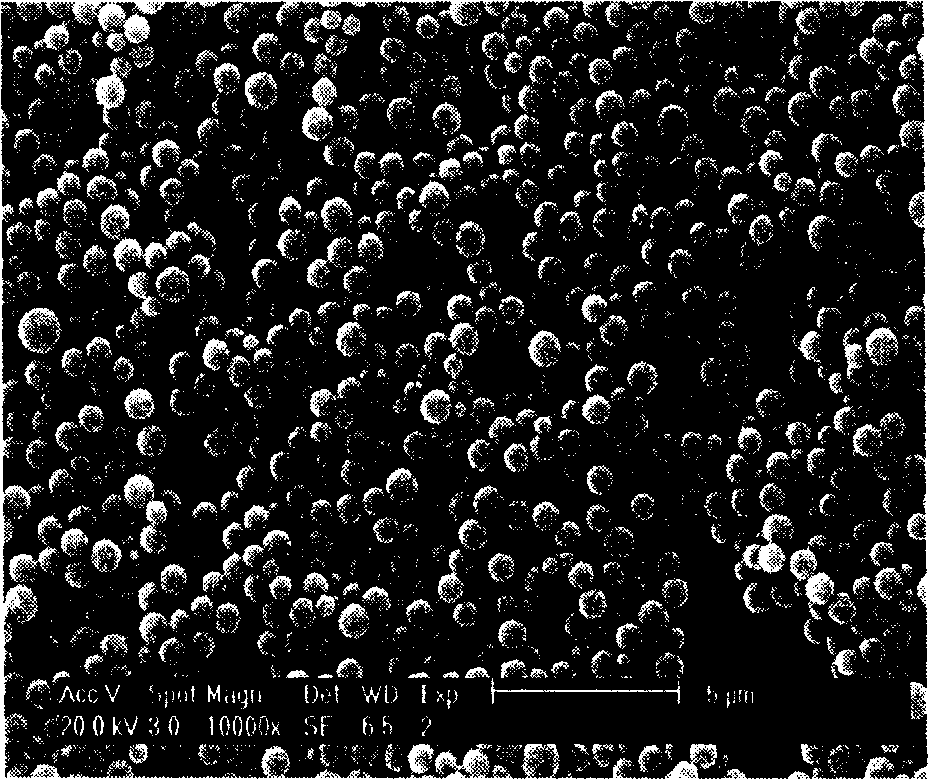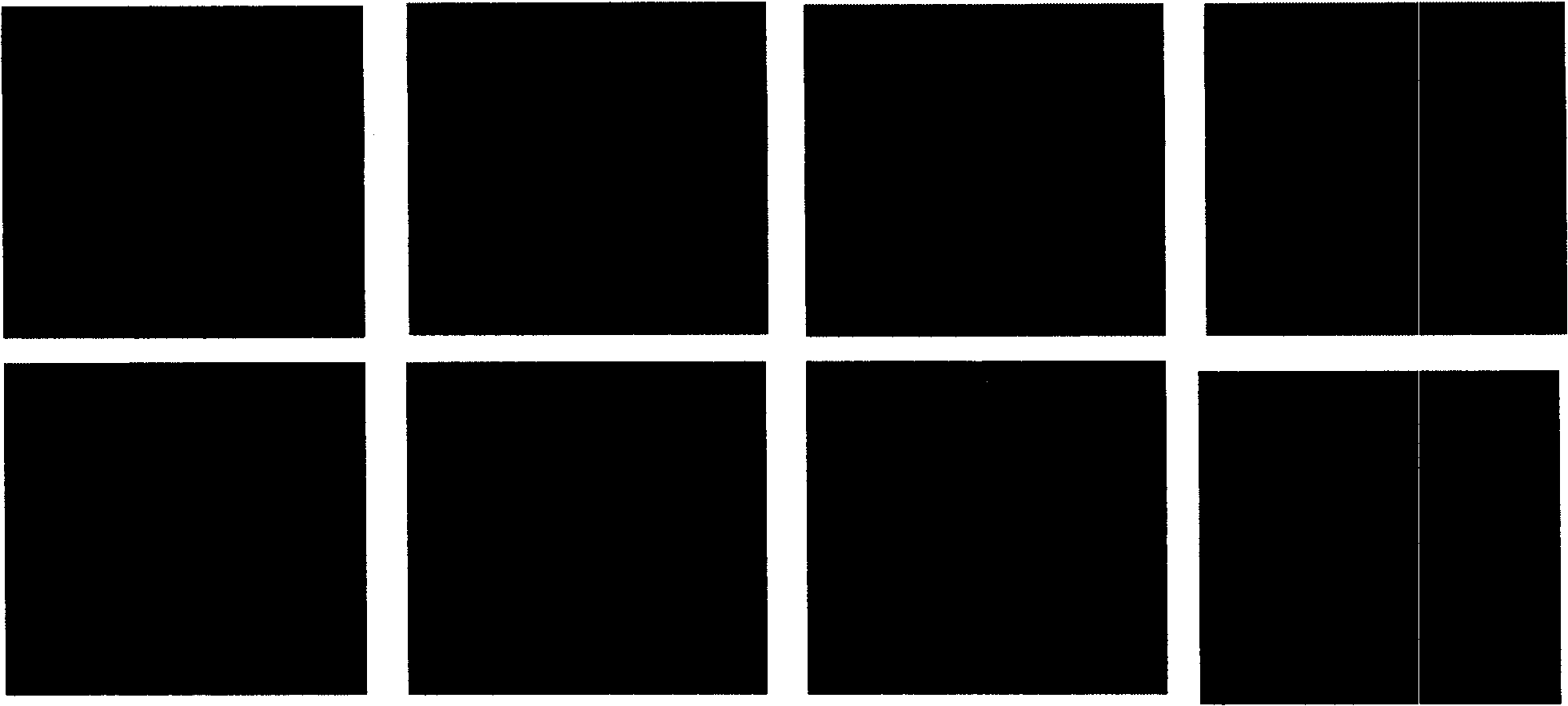Method for preparing epirubicin slow-release prepn
A technology of epirubicin and sustained-release microspheres, which is used in pharmaceutical formulations, medical preparations with inactive ingredients, and medical preparations containing active ingredients, etc. It can solve the problem that epirubicin is unstable and can only be stored. problems, to achieve the effects of improved drug release characteristics, high encapsulation efficiency, and simple operation process
- Summary
- Abstract
- Description
- Claims
- Application Information
AI Technical Summary
Problems solved by technology
Method used
Image
Examples
Embodiment 1
[0024] (1) Dissolve 5 mg of epirubicin hydrochloride in 30 ml of N-N dimethylformamide (DMF) to obtain solution A; (2) take 10 μl of triethylamine and add it to solution A to obtain solution B; (3) weigh 50 mg of polylactic acid (relative molecular weight is 5000) was added to solution B to obtain solution C; (4) 1.6 ml of water was added to solution C to obtain a turbid solution; (5) the turbid solution was transferred to a dialysis bag, and the dialysis Place the bag in distilled water for dialysis, stir at the same time, and change the water every 2 hours; (6) After 8 hours, centrifuge the product obtained in step 5, sonicate, and wash 3 times with water to remove unembedded epirubicin, and take the sample obtained by freeze-drying the precipitate . The encapsulation efficiency of the obtained sample was 59.6%, and the drug loading rate was 6.8%. The surface of the microspheres was observed through a scanning electron microscope to be smooth, and the particle size distribut...
Embodiment 2
[0026] (1) Dissolve 12 mg of epirubicin hydrochloride in 18 ml of N-N dimethylformamide (DMF) to obtain solution A; (2) take 12 μl of triethylamine and add it to solution A to obtain solution B; (3) weigh Add 60mg of polylactic acid (relative molecular weight: 5000) to solution B to obtain solution C; (4) add 2ml of pure water to solution C to obtain a cloudy solution; (5) transfer the cloudy solution to a dialysis bag (8000-14000 ), and place the dialysis bag in distilled water for dialysis, while stirring, and change the water every 2h; (6) after 24h, the product obtained in step 5 is centrifuged, ultrasonicated, and washed 3 times with water to remove unembedded epirubicin, and take The resulting sample was precipitated and freeze-dried. The encapsulation rate of the obtained sample was 53.6%, and the drug loading rate was 7.4%. The scanning electron microscope observed that the surface of the microspheres was smooth, and the particle size distribution was between 200nm and...
Embodiment 3
[0028] (1) 4 mg of epirubicin hydrochloride was dissolved in 3 ml of N-N dimethylformamide (DMF) to obtain solution A; (2) 2 μl of triethylamine was added to solution A to obtain solution B; (3) weighed Add 40mg of polylactic acid (relative molecular weight is 10,000) into solution B to obtain solution C; (4) add 0.75ml of pure water to solution C to obtain a cloudy solution; (5) transfer the cloudy solution to a dialysis bag (8000 ~14000), put the dialysis bag in distilled water for dialysis, stir at the same time, change the water every 2h; (5) after 4h, centrifuge the product obtained in step 5, ultrasonic, and wash 3 times with water to remove unembedded epirubicin , take the sample obtained by freeze-drying the precipitate. The encapsulation efficiency of the obtained sample was measured to be 30.9%, and the drug loading rate was 4.9%. The scanning electron microscope observed that the surface of the microspheres was smooth, and the particle size distribution was between ...
PUM
| Property | Measurement | Unit |
|---|---|---|
| particle diameter | aaaaa | aaaaa |
| particle diameter | aaaaa | aaaaa |
| particle size | aaaaa | aaaaa |
Abstract
Description
Claims
Application Information
 Login to View More
Login to View More - R&D
- Intellectual Property
- Life Sciences
- Materials
- Tech Scout
- Unparalleled Data Quality
- Higher Quality Content
- 60% Fewer Hallucinations
Browse by: Latest US Patents, China's latest patents, Technical Efficacy Thesaurus, Application Domain, Technology Topic, Popular Technical Reports.
© 2025 PatSnap. All rights reserved.Legal|Privacy policy|Modern Slavery Act Transparency Statement|Sitemap|About US| Contact US: help@patsnap.com



